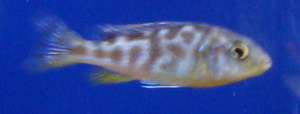Tropical Fish Aquarist
Archives
Endangered Freshwater Tropical Fish: A Global Conservation Challenge
SIGN UP FOR OUR NEWSLETTER
Endangered Freshwater Tropical Fish: A Global Conservation Challenge |
Unique species in lakes worldwide face extinction threats |
Lakes, often overlooked in conservation discussions, are vital ecosystems teeming with unique biodiversity. Despite covering just 1% of Earth's surface, they harbor nearly as many fish species as all the world's oceans combined. Alarmingly, many freshwater tropical fish species are now endangered due to human activities.
In Africa, Lake Malawi stands out with over 1,000 fish species, many endemic. However, approximately 9% of its 458 assessed species are at high risk of extinction. Overfishing and habitat degradation threaten species like the critically endangered Chambo, a staple for local communities.the conversation
Asia's Lake Poyang in China is home to the critically endangered Yangtze finless porpoise. Human activities such as sand mining and dam construction have severely impacted its habitat, leading to a population decline to just under 1,300 individuals.
In Australia, the Coorong and Lower Lakes region hosts endangered species like the Southern Bell Frog and the Murray hardyhead fish. Invasive species and habitat degradation have led to significant population declines.
Europe's Caspian Sea, the world's largest saltwater lake, is home to the critically endangered Caspian seal. Overhunting and environmental changes have caused a 90% population decline since the 20th century.
In North America, the Great Lakes have seen the decline of species like the shortnose cisco, once thought extinct but recently rediscovered in Lake Superior. Invasive species and habitat degradation continue to threaten native fish populations. wikipedia
South America's Lake Titicaca is home to the critically endangered Titicaca water frog. Pollution, invasive species, and overharvesting have led to significant population declines.
These cases underscore the urgent need for global conservation efforts to protect endangered freshwater tropical fish as well as their habitats. Sustainable practices and habitat restoration are crucial to preserving these unique species for future generations. While most aquarists keep fish for their decorative and stress relieving properties, a secondary task at providing appropriate and health conditions to help return the population in the wild can be accomplished by selective breeding and spawning practices with specimens previously removed and are presently cared for in our aquariums.
If the secrets to housing, holding and spawning endangered fish, the problem of depredation can be worked at from two sides. The habitat must be cared for and the dangerous situations for the fish must be removed. At the same time, the careful spawning and documentation of their requirements can reduce the demand for wild specimens and thereby help reduce the pressure at the native habitat level. |

